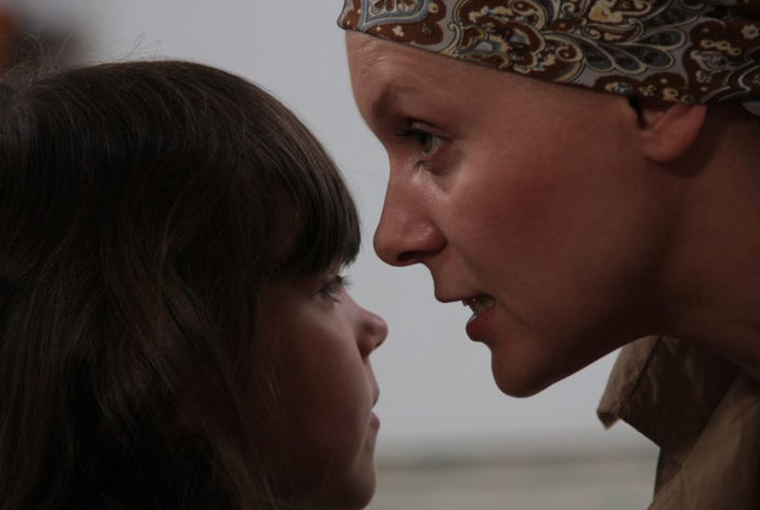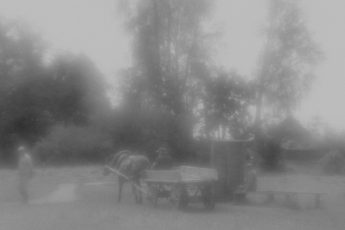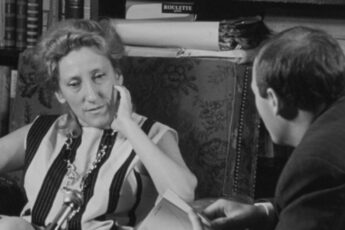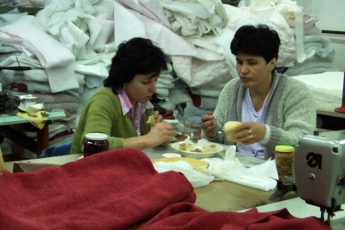
Today, an overwhelming part of films coming from Russia is defined by two tendencies. Aesthetically, the first may contemptuously be described as clinical mysticism; the second as clinical realism. Of course, cinema is said to be for ever divided by a realistic trend on the one hand, and an imaginary one on the other. It’s the classic Frère-Lumière-vs.-Meliès divide. But this probably goes for all films and may even be the causa sui of cinema’s aesthetic changes. Too much reality in film incites other filmmaker’s imagination because films that claim to show reality are unable to escape from a minimum of creative choice. So a filmmaker might feel that his art is more true when it truly shows his imagination than deceiving the audience with a reality that, all things considered, always reflects a part of his own point of view anyway. Another generation, however, may think that those who consider their own imagination as truthful are selfish dreamers and develop a need for reality again. And so the story continues…
Contemporary Russian films add an awkward element to this cycle. Both the more realist films and the more imaginary ones are marked by an impeccable, almost clinical lure. Perfect travelings, photoshop-like colors, an unclear interest for stylized graphical details (ie. dropping water, wind moving over grass, tree barks, windows, mirrors,) give a surreal touch even to films with the most hardcore documentary-style ambitions. In Vassily Sigarev’s Wolfy unpainted doors, peeling timber on floors, cracks in concrete walls, dirt, blood, in short, the miserable brutality of the low class environment at the center of the film looks nice and clean.
But Sigarev’s film tells a bitter story. A woman remembers her childhood and her extremely troubled relationship to her mother. The mother neglects her as a child. After coming back from prison, where the mother was incarcerated for homicide, she tries to find a reason for life in short-lived relationships with cruel men. The child repeats her mother’s behavior, for example by befriending a dead boy in the cemetery. Like her mother, she has to deal with so much neglect that she comes to take the conditions that make her life difficult for granted, up to the point that she seems to desire them, ie. the romantic relationship with the dead boy. The title of the film is also an illusion to this ambiguous way of life. In Russian the word “volchok” means spinning top, but also wolf cub. In the beginning of the film, the mother gives her daughter a spinning top as a present. As things worsen, she tells her child that she found her on a cemetery dressed like a wolf. Hence, her daughter’s desire to go the cemetery. The daughter comes to prefer the neglected object (the wolf) to the one representing love (the spinning top). This Nietzschean/Freudian turn of desire might be interesting, and perhaps also important to understand Russian society today. But it fails to convince because the film neither takes on the child-like perspective one might have of a spinning top nor the fearsome, and real impression one might have of a wolf. Instead, the film moves away from its characters and their conflict by putting them into a perspective that is completely strange to them. What do close-ups of grass and stones have to do with the reality of shattered lives?
The problem is clear. Wolfy relies on an aesthetic that has nothing to do with what it has to tell. It is not an exaggeration to say that if one didn’t know what the film was about, and one were only to look at, for example, the scene in which the young girl eats the little chocolate candies family members leave on the graves of their dead relatives, one might mistake it with a commercial for a chocolate bar.
Wolfy is not an exception. Alexey Fedorchenko’s more mystical Silent Souls (2010), and to a lesser extent Andrey Zvyagintsev The Return (2003) and his recent Elena (2011); Bakur Bakuradze’s more realist The Hunter (2011), and Angelina Nikonova’s Twilight Portrait (2011) share this paradox. They all create an awkward distance between form and content. If there is no Brechtian intention behind this gap, what makes these films seem so fake? The most plausible answer to this question is that they refuse to face reality, be it the reality surrounding them or a more personal and imaginary one. The clinical feeling these films convey matches with this looking away. Only people who are afraid of dirt feel comfortable in a sterilized environment. This is a harsh judgment, and it does affect some filmmakers more than others. But it is too much of a common trait to be ignored. Instead of trusting their own intuitions and feelings about today’s Russia, these filmmakers take refuge in socially romantic images.
Oddly, Sigarov is celebrated by some people in the film world as a cinematographic underdog. He helped prostitutes to find their way to costumers somewhere between Moscow and Vladivostok before turning to the theater and then to film. He comes from the abyssal environment his films talk about. So there is no obvious reason in his biography to soften his account on life with the safe look of TV commercials and industrial design. Wolfy appears to be more of a way to escape domestic violence than to understand it. Instead of delving into the real nightmare of his characters, Sigarev clings to worn-out metaphors.
In Wolfy, the most striking example for this may be found in a scene depicting a traveling through a birch tree forest. The birch tree forest is at first part of the wallpaper of the apartment of mother and daughter, and later turns into a real forest in the scenes of the cemetery and during a dream the daughter has. Since Tarkovsky’s Ivan’s Childhood, the birch tree forest has become a topos of Russia’s mystically disposed films. Out of the five above mentioned films, three include a traveling through a forest. In these films, the forest is a sort of nostalgic manifestation of Russia’s beauty. Only the erect trees stand strong and firmly against the crooked human world. The trees convey the feeling that truth, beauty, and good life still exist. In Ivan’s Childhood, The Return, Silent Souls, The Hunter, and Wolfy (see this month’s image in the same order) the untouched forest ultimately contrasts the reality of suburban concrete blocks. It keeps up the idea that, despite of violence and terror, Mother Russia is still alive.
Obviously this comes across as an illusion. Does Sigarov really believe that the forest keeps the promise of an alternative life? If not, why combine the girl’s escape with a forest in the first place? Sigarov, and other directors with similar style seem to lack genuine metaphors. This may distinguish them from Tarkovsky who could trust in the metaphorical force of his trees, because they represented real hope. In Ivan’s Childhood, the forest is a peaceful refuge from war. It is the only place where love is allowed to happen. In Sigarov’s film, the forest is as fake as the wallpaper in the girl’s room. Its meaning, although similar to the ones in Tarkovsky’s film, gets lost in the way the forest is shown. Betula ficta – fake birch tree.




Leave a Comment